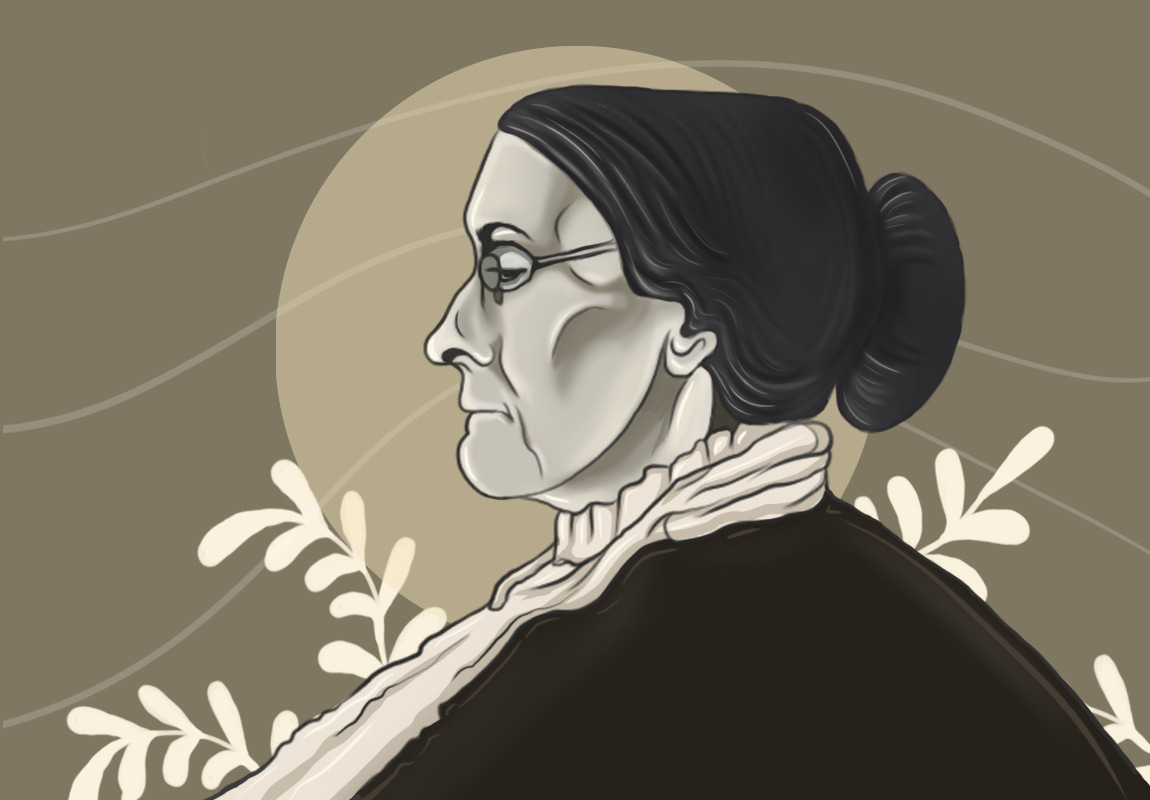Susan Brownwell Anthony, an American social reformer and women’s rights activist, was one of the most renowned leaders of the women’s suffrage movement.
Susan was born on February 15, 1820, in Adams, Massachusetts. She was raised in the Quaker tradition. Her father, Daniel Anthony, was a farmer and later a cotton mill owner and manager. Daniel was raised as a Quaker. Susan’s mother Lucy came from a family that fought in the American Revolution and served in the Massachusetts state government.
According to Britannica, from a young age, Susan was inspired by the Quaker belief that everyone was equal before God. She had seven brothers and sisters, many of whom later became activists.
In 1826, the family moved from Massachusetts to Battenville, New York. Susan attended the district school there and then a school set up by her father, and finally a boarding school in Philadelphia. After her studies, in 1839, she took up a position in a Quaker seminary in New Rochelle, New York. From 1846 to 1849, she taught at a female academy in upstate New York.
After three years of teaching, Susan settled with her family near Rochester, New York. There she met leading abolitionists William Lloyd Garrison and Frederick Douglass, who were her father’s friends. Listening to their ideologies motivated Susan to do more to help end slavery. It was a time when people thought it was improper for women to give speeches in public, but Susan did not pull back. She became an abolition activist and made many passionate speeches against slavery.
In 1848, a group of women held a convention at Seneca Falls, New York. It was the first women’s rights convention in the United States and was a pioneering moment for the suffrage movement. Even though her mother and sister attended the convention, her father Daniel Anthony did not.
Susan and Elizabeth Stanton opposed the legislation when US Congress passed the 14th and 15th Amendments which gave voting rights to African American men but not to women.
In 1851, Susan met Elizabeth Cady Stanton. They became great friends and worked together for over 50 years fighting for women’s rights. According to Women’s History, they travelled throughout the country and delivered speeches demanding that women be given the right to vote. From 1856, Susan also served as chief New York agent of Garrison’s American Anti-Slavery Society. During the early phase of the Civil War, she helped organise the Women’s National Loyal League, which urged the case for emancipation.
Susan was good at strategy. Her passion, discipline, energy and ability to organise made her a strong leader. She was also a prime target of abuse by newspapers and the public. Susan and Elizabeth Stanton co-founded the American Equal Rights Association. In 1868, they became editors of the Association’s newspaper, The Revolution, which helped spread the ideas of equality and rights for women. Susan delivered lectures to raise money for publishing the newspaper and to support the suffrage movement.
Susan and Elizabeth Stanton opposed the legislation when US Congress passed the 14th and 15th Amendments which gave voting rights to African American men but not to women. Their belief led to a split from other suffragists, and they formed the National Woman Suffrage Association (NWSA) to push for a constitutional amendment giving women the right to vote. According to Britannica, some members of the NWSA left the organisation to join Lucy Stone’s more conservative American Woman Suffrage Association. However, the NWSA remained a large and powerful group, and Susan continued to serve as its principal leader and spokeswoman.
Susan travelled constantly with Elizabeth Stanton in support of efforts in various states to win the franchise for women.
In 1872, according to Britannica, as a test of the legality of the suffrage provision of the Fourteenth Amendment, Susan cast a vote in the 1872 presidential election in Rochester, New York. She was arrested, convicted (the judge’s directed verdict of guilty had been written before the trial began, and she called the proceedings “the greatest judicial outrage history has ever recorded”), and fined $100. Though she refused to pay the fine, the case was carried no further. In 1876, Susan led a protest at the centennial of the nation’s independence. She gave a speech – ‘Declaration of Rights’ – written by Elizabeth Stanton and another suffragist, Matilda Joslyn Gage.
Susan travelled constantly with Elizabeth Stanton in support of efforts in various states to win the franchise for women. In 1890, after lengthy discussions, the rival suffrage associations were merged into the National American Woman Suffrage Association. When Elizabeth Stanton resigned in 1892, Susan became the President and led the association until 1900.
By the 1900s, Susan had outlived the abuse and sarcasm she faced during her earlier years as an activist and became a national heroine. Her visits to the World’s Columbian Exposition in Chicago in 1893 and the Lewis and Clark Exposition in Portland, Oregon, in 1905 were warmly received, as were her trips to London in 1899 and Berlin in 1904 as head of the US delegation to the International Council of Women.
Susan Anthony died on March 13, 1906, 14 years before women were given the right to vote with the passage of the 19th Amendment in 1920.
Now put on your thinking hats and think about the following questions for a couple of minutes.
Can you think of how Susan B. Anthony’s organisational abilities influenced the women’s rights movement of that time?
How would you describe the contributions of Susan B. Anthony to the suffrage movement?
Write down your thoughts and discuss them with your students, children, and your colleagues. Listen to their views and compare them with your own. As you listen to others, note how similar or different your views are to others’.
Thank you for listening. Subscribe to The Scando Review on thescandoreview.com.
Happy Teaching!














Susan Brownwell Anthony: Pioneering crusader for women’s suffrage